Musical - Genres
History of the film musical
Musical is a term for a dramatic genre that combines dialogue with singing and possibly dancing, accompanied by music – the performers not only have to be good actors and dancers, but they also have to be talented singers. It generally refers to either a theatrical musical or a film musical, which came into being with the advent of sound. Its origins are in operas, operettas and variety shows, while the film musical was of course created in the wake of the theatre musical, not to mention the fact that some film musicals are direct adaptations of them. The very name "musical" is based on the English term "musical comedy", which was used in the first half of the 20th century to refer to comedic, singing and often non-singing theatrical performances. The musical is often intertwined with comedy, but any other fictional genre can be treated as a musical as well. It has its roots in the Broadway Theatre Boulevard, in the USA, the cradle of a number of theatrical musicals that are still among the most famous and popular today.
Singing in musicals usually replaces dialogue and thus develops the plot and the character, but in some cases the singing and dancing numbers may have only a filler role. Musicals are characterised for their blending of reality and fantasy, i.e. the real world with a fictional, illusory or dream world. These worlds allowed set designers, directors, dance choreographers and cinematographers to unleash their imaginations and creativity, making musicals the most audiovisually attractive and creative genre of commercial Hollywood cinema for many decades. Every major American film studio had its musical stars and composers and developed its own distinctive style for the genre. The music in musicals was also influenced by the alternation of different genres over the decades, with jazz and classical music dominating first, followed by rock'n'roll and rock, and finally pop.
First film musicals
The earliest sound films (for example, Don Juan from 1926) had audio tracks with music and sporadic sounds played separately, in parallel with the film (and there was an earlier trend to accompany the film with a live orchestra). The first feature-length sound film that already incorporated an audio track was The Jazz Singer (1927), but it had synchronized sound of this type only for some parts and contained only a few dialogue lines. However, it was the first film in history where the audience could hear the actors speak directly from the screen, and it was also the first musical, with a total of six songs. The Singing Fool (1928), about the ups and downs of a singer posing as a black man, became a big hit that led to cinemas installing sound systems in their auditoriums and filmmakers hiring Broadway composers to write songs specifically for films.
The first film that no longer contained any intertitles and was entirely spoken was the crime drama Lights of New York (1928), which contained a musical passage set in a nightclub. The Broadway Melody (1929), which offered audiences dancing as well as singing, would win an Oscar at the second Academy Awards in history, which led to all major Hollywood studios turning their attention to musicals, thus definitively marginalising the silent film. In addition, the success of The Broadway Melody, which formed the basis for a so-called backstage musical set in the wings of an upcoming theatre production, led to many thematic sequels filmed between 1935 and 1940. Some musicals, on the other hand, preferred the de facto strategy of omitting the story line altogether and replacing it with a disjointed series of musical numbers (see, for example, the 1929 Hollywood Revue).
The Broadway Melody (1929)
Photo © Metro-Goldwyn-Mayer (MGM)
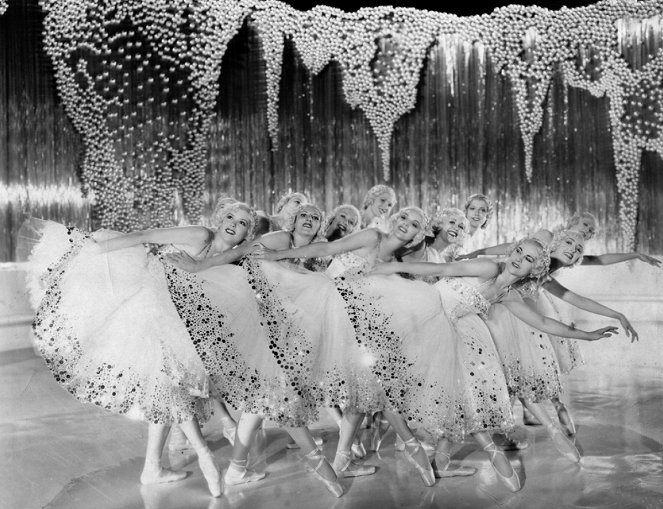
The saturation of the market in the 1930s
1929 also saw the premiere of the musical The Desert Song and Gold Diggers of Broadway, the biggest box office hit of its time. At that time, America was literally bursting at the seams with musicals, among the best known from the late 1920s and early 30s were Sally (1929), Show Boat (1929), Bright Lights (1930), Under a Texas Moon (1930), King of Jazz (1930) and Kiss Me Again (1931). In 1930, Hollywood produced more than a hundred musicals, which quickly led to a market glut, and by 1931 there were roughly seven times fewer musicals made. From 1933, however, musicals quickly came back into fashion thanks to the advent of elaborate dance choreographies. The popular musicals of that year include 42nd Street, Gold Diggers of 1933 and Footlight Parade, whose creative dance numbers choreographed by Busby Berkeley exceeded anything that could be seen in theatres at the time.
Also at the turn of the 1920s and 30s immigrants from Europe began to flow into the USA, and some of them found a foothold in Hollywood and partly translated their European vision into films and musicals, influenced by local operas and operettas. For them, America was not an elegant enough setting for musicals, so they set them in Paris or Vienna – the German-born director Ernst Lubitsch made, for instance, The Love Parade (1929), Monte Carlo (1930), The Smiling Lieutenant (1931), One Hour with You (1932) and The Merry Widow (1934), in which he liked to cast musical stars Maurice Chevalier and Jeanette MacDonald, while the Russian-born director Rouben Mamoulian made the musical Love Me Tonight (1932) in America. However, the shape of American musicals at that time was greatly influenced by composer George Gershwin, composer and musical lyricist Cole Porter and Broadway musical writer Richard Rodgers.
42nd Street (1933)
Photo © Warner Bros. Pictures
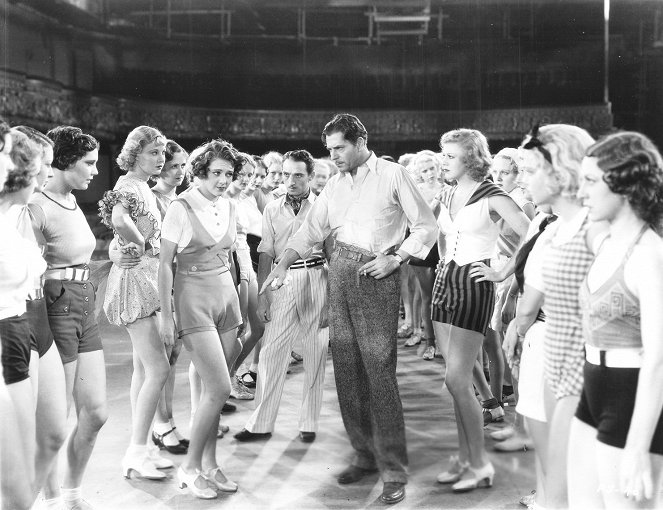
Fred Astaire and Ginger Rogers
In 1933, the musical Dancing Lady opened in cinemas starring actor, dancer, singer and choreographer Fred Astaire, who subsequently formed a duo with actress, singer and dancer Ginger Rogers, with whom he performed in the musical Flying Down to Rio the same year. Together, they starred in eight more musicals over the following six years, making them the Hollywood stars of the 1930s. Fred Astaire had previously performed on Broadway, and his elegance of movement and professionalism made him the most sought-after film dancer, and he enjoyed a successful acting career in his later years. The same is true for Ginger Rogers, who ended her career in musicals alongside Astaire in 1939 with The Story of Vernon and Irene Castle, after which she embarked on a solo career as a character actress (and won an Oscar in 1940).
Of their musicals together, the most outstanding were the choreographically imaginative Top Hat (1935), in which the two heroes meet due to disturbing the night's peace while tap dancing, and Swing Time (1936), about a remorseful cabaret dancer who enrols in the classes of a dance teacher as a way to apologise to her. Most of these musicals were essentially simple comedies with plots in urban settings, based on all sorts of mistakes and misunderstandings. In The Gay Divorcee (1934), the protagonist unwittingly becomes involved in the scheme of a woman trying to convince her husband that a divorce was necessary; in Shall We Dance? (1937) the dancing couple has to get married under false pretences to prevent the media from spreading false information, and in Carefree (1938), a series of minor mishaps cause the hero's fiancée to fall in love with his best friend.
Fred Astaire would later star in a number of other musicals, but with different dance partners. For example, in You'll Never Get Rich (1941) and You Were Never Lovelier (1942), he starred alongside actress and dancer Rita Hayworth, who went on to appear in the musicals My Gal Sal (1942) and Cover Girl (1944), among others. Astaire's last acting collaboration with Ginger Rogers was the musical The Barkleys of Broadway (1949), in which the two famously reunited ten years after their separation. In this film, Fred Astaire played a professional dancer and Ginger Rogers played his wife, who longed to leave the dance scene to pursue dramatic acting – the film therefore essentially reflected the creative tension that existed between the two actors in real life.
Swing Time (1936)
Photo © RKO Radio Pictures
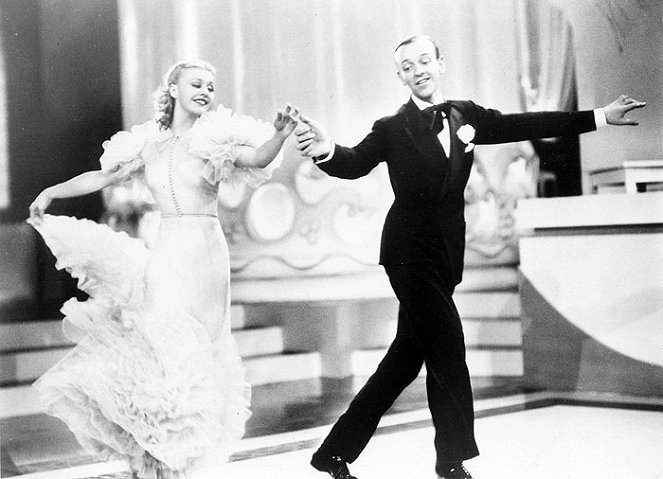
Judy Garland and Gene Kelly
In 1939, The Wizard of Oz became an immortal classic among musicals. It starred young actress and singer Judy Garland portraying the character of the teenage Dorothy, who finds herself in a fantasy realm and, in order to return home, embarks on a quest to the Emerald City in the company of the Lion, the Tin Man and the Scarecrow. She signed an acting contract with MGM at the age of thirteen and would go on to star in more than two dozen films of that studio (often paired with Mickey Rooney), many of which were also musicals. She had starred in other musicals before, but The Wizard of Oz was her first truly successful one. Her next big success came with Meet Me in St. Louis (1944), made by her future husband Vincente Minnelli.
Judy Garland co-starred with Fred Astaire in Easter Parade (1948) and alongside other luminaries in the last two films of the star-studded musical trilogy The Great Ziegfeld (1936), Ziegfeld Girl (1941) and Ziegfeld Follies (1945), made in honour of Broadway artistic director Florenz Ziegfeld. Her other musicals include the comedy Girl Crazy (1943) and the western The Harvey Girls (1946), in which she portrays a naive girl who comes to Arizona in response to a marriage proposal. In 1950, MGM terminated her contract due to personal problems, but she made a triumphant return after a several-year hiatus in the lead role of the musical A Star Is Born (1954), a remake of the 1937 drama of the same name, which earned her a Golden Globe and Oscar nomination.
The Ziegfeld Follies also featured actor, dancer and singer Gene Kelly, who, apart from Mickey Rooney, was the most frequent acting partner of Judy Garland, with whom he appeared, for example, in the adventure musical The Pirate (1948) and in Summer Stock (1950), where Judy played an engaged farmer in whose barn, at the urging of her lovestruck sister, a crew headed by a director played by Gene Kelly begin preparing to shoot a new film. In the musical An American In Paris (1951) by Vincente Minnelli, Kelly played a painter in love with a young French woman engaged to a cabaret singer. Kelly was also an influential and creative film director who enriched dance sequences in musicals with experiments in slow motion, photography effects and animation. For his 1949 debut, On the Town, he cast Frank Sinatra, with whom he co-starred in the musical Take Me Out to the Ball Game that same year. But his greatest success by far came with Singin' in the Rain (1952), a playful romantic satire of Hollywood at the time of the advent of sound, still considered one of the best musicals of all time.
The Wizard of Oz (1939)
Photo © Metro-Goldwyn-Mayer (MGM)
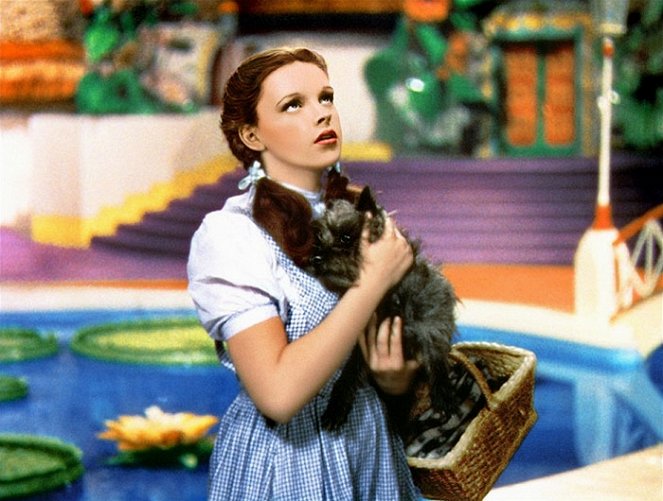
Soviet musicals of the 1930s and 40s
Although they were primarily a propaganda tool, the musicals produced in the Soviet Union were filmed in such a way that they could compete with American musicals in terms of entertainment and variety, and already in the 1920s they were more popular than the serious films produced domestically. In the 1930s, director Grigoriy Aleksandrov made several musicals, and his film Moscow Laughs (1934), inspired by Hollywood models, was the first ever Soviet musical. He followed it up with The Circus (1936) and Volga, Volga (1938), which became hugely popular in its time (it was even Stalin’s favourite film!), even though it fulfilled the required parameters of socialist realism only in terms of aesthetics, but not in ideological values.
The authors of Soviet musicals were forced to build their films around banal plots and to emphasize themes that celebrated industrial progress and the working class. Typically, the plots revolved around the story of a poor individual who, through hard work, achieved a better and richer life. For instance, Ivan Pyrev's films Tractor Drivers (1939), They Met in Moscow (1941) and Cossacks of the Kuban (1949) dealt with the lives of hard-working farmers. In the 1940s Grigoriy Aleksandrov made the musicals Tanya (1940) and Spring (1947), in which, as in most of his previous films, he cast the actress Lyubov Orlova, the biggest Soviet film star at the time. What was remarkable is that many Soviet musicals from the era of socialist realism were based on an optimistic atmosphere of cheerfulness and abundance, while the actual conditions in the country were exactly the opposite.
Cossacks of the Kuban (1949)
Photo © Mosfilm
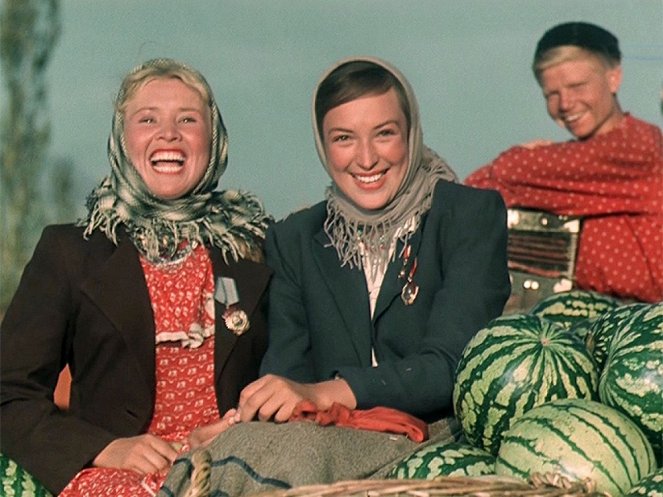
The boom of American theatrical adaptations in the 1950s
Movie adaptations of stage musicals were filmed shortly after the creation of the film musical as such, but they usually resembled their stage model only sporadically and rarely achieved the same success. It was not until the 1950s that more faithful adaptations began to appear in large numbers, with films such as The Band Wagon (1953), which returned to the theatrical backstage motif, and Guys and Dolls (1955), starring Frank Sinatra and Marlon Brando as gamblers. Musicals adapted from the works of composer Richard Rodgers and lyricist Oscar Hammerstein were very popular and successful. They include Oklahoma! (1955), about two love stories set in the early 1920s; a five-Oscar-winning biographical musical The King and I (1956), dealing with the fate of the Siamese monarch Mongkut played by Yul Brynner; Carousel (1956), which deals with the theme of the afterlife; and the wartime musical romance South Pacific (1958), set during the Pacific War.
In contrast, original musicals written specifically for the silver screen declined significantly in the 1950s, while the film industry also began to compete with television. The category of non-theatrical musicals includes, for example, Vincente Minnelli's Gigi (1958), based on a novel, which received nine Academy Awards; the musical Seven Brides for Seven Brothers (1954) was based on a literary short story, and the film Calamity Jane (1953) was inspired by the Wild West heroine of the same name. White Christmas (1954) made extensive use of songs by composer Irving Berlin, while Funny Face (1957), starring Audrey Hepburn and Fred Astaire, was based on music and lyrics by the Gershwin brothers. Otto Preminger directed the musicals Carmen Jones (1954) and Porgy and Bess (1959), starring Dorothy Dandridge, while Howard Hawks cast Marilyn Monroe in his comedy musical Gentlemen Prefer Blondes (1953).
Gentlemen Prefer Blondes (1953)
Photo © Twentieth Century-Fox Film Corporation
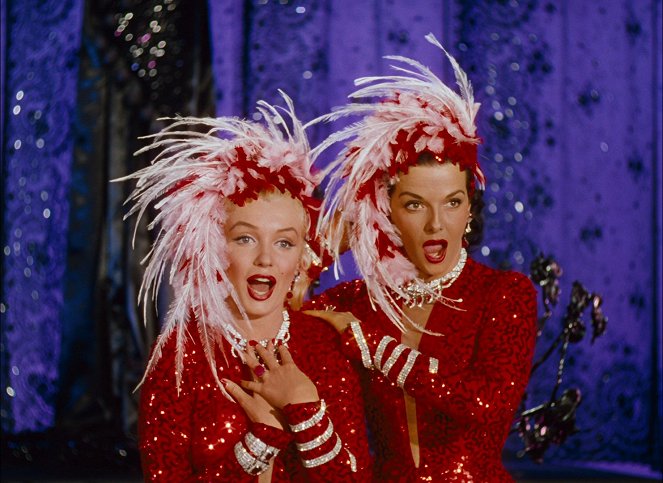
The 1960s and the end of the golden age of the musical
The period from the 1940s to the 1960s is generally referred to as the golden age of musicals, but the most famous and best-known were, with a few exceptions, made by the end of this era. Robert Wise and Jerome Robbins's West Side Story (1961), a musical based on Shakespeare's tragedy "Romeo and Juliet" but set in modern New York City, replaced the conflict between rival families with a conflict between American descendants of immigrants and gangs made up of newly arrived immigrants. The musical My Fair Lady (1964), directed by George Cukor and starring Audrey Hepburn as a plain-spoken florist who becomes the subject of a bet on whether a woman of low birth can be trained in etiquette well enough to fit in with the social elite within six months, won eight Academy Awards. The fairytale musical produced by Walt Disney and starring Julie Andrews as the magical nanny Mary Poppins (1964) combined live actors with two-dimensional animation and turned in five out of thirteen Oscar nominations. A year later, five Oscars went to the musical The Sound of Music (1965), directed by Robert Wise and filmed on location in Austria and Germany, also starring Julie Andrews, this time as a novice who, after leaving her convent, becomes a governess in the family of a widowed sea captain, played by Christopher Plummer.
All of these films were extremely successful in terms of critical acclaim and awards, as well as in terms of audience attendance, which naturally led to a new boom in musicals. After 1965, Julie Andrews starred in the musicals Thoroughly Modern Millie (1967) and Star! (1968), Francis Ford Coppola made Finian's Rainbow (1968) with Fred Astaire, and William Wyler cast Barbra Streisand in his biographical musical Funny Girl (1968). But there were also a large number of unsuccessful musicals, which began to show the public's waning interest in the genre. The advent of rock'n'roll contributed to the change in audience taste in the 1960s, especially with musicals starring Elvis Presley, who after returning from the army in 1960 produced one film after another.
In contrast, the Arthurian musical Camelot (1967), the family film Doctor Dolittle (1967), the nostalgic Goodbye, Mr. Chips (1969), the western Paint Your Wagon (1969), the comedy On a Clear Day You Can See Forever (1970) and the adventure Man of La Mancha (1972) fared badly, and the classical musical genre began to move into the background after the seven Oscar-nominated Hello Dolly! starring Barbra Streisand failed financially in 1969. Some of these films, however, would receive recognition and a warmer audience response many years later.
West Side Story (1961)
Photo © United Artists
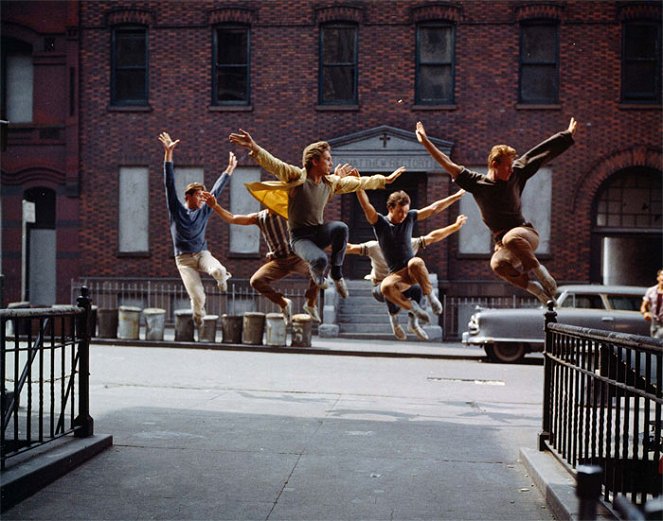
European musicals of the 1960s and 70s
Although French director and screenwriter Jacques Demy conceived his 1967 film The Young Girls of Rochefort as an homage to MGM musicals (and cast Gene Kelly in it), and several American-style musicals were produced in the Soviet Union, in general the Hollywood musical tradition had little influence on films made outside the US. Other Demy musicals, such as The Umbrellas of Cherbourg (1964) and Donkey Skin (1970), were typically French, and even in other European countries the genre developed more from domestic traditions, and only on a very limited scale. In the UK, the genre did not become prominent until the 1960s, when the musical comedies A Hard Day's Night (1964) and Help! (1965), featuring The Beatles, became huge national hits with international acclaim. They were followed by, among others, the Oscar-winning musical adaptation of "Oliver Twist" directed by Carol Reed called Oliver! (1968) and the child-starring gangster film Bugsy Malone (1976), and in the following years, the UK would catch up with America in terms of musical film production.
The Csárdás Queen (1971), based on the famous Hungarian operetta of the same name, was co-produced by Hungary, Germany and Austria, and a year later the war musical Red Psalm (1972) was filmed in Hungary. In Italy, the musical The Crazy Kids of the War (1969) followed a war theme, while Rita of the West (1967) was more of a western. Czechoslovakia produced the classical musicals Green Gold (1964) and A Night at Karstein (1973), the musical parody of westerns Lemonade Joe or Horse Opera (1964) and the stage film If a Thousand Clarinets (1964), featuring stars of the Czechoslovak music scene at the time. Spain had a tradition in musical films dating back to the 1930s, often inspired by Spanish operettas, or zarzuelas. Films such as Morena Clara (1936) and El Barbero de Sevilla (1938) were only a short step to musicals and enjoyed considerable popularity in Spain until the end of the 1970s (see Listen to My Song from 1959 or Canción de Juventud from 1962). Spanish director Carlos Saura would make several musicals later, such as Blood Wedding (1981) and Carmen (1983).
The Umbrellas of Cherbourg (1964)
Photo © Ciné Tamaris
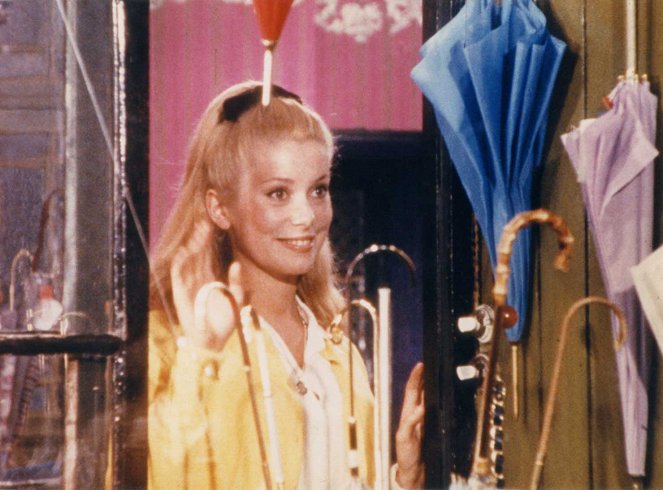
The revival of the American musical in the 1970s
The turn of the 1960s and 70s clearly showed that the form of musicals from the golden age was outdated and that something new was needed. The authors of new musicals therefore threw away all the glitz and theatricality and decided either to go in more realistic directions or to break away from reality and experiment with film themes. The latter route was taken, for example, by the extravagant rock musical The Rocky Horror Picture Show (1975), a parody of old science fiction and horror B-movies. Filled with quirky ideas and sophisticated pop culture references, the film, which told the story of a young newlywed couple who get lost on the road in heavy rain and find themselves at a reunion of the Transsexual inhabitants of the Transylvania galaxy, flopped during its premiere, but after its inclusion in midnight screenings, it became a cult classic that gained a strong fan base over the years, and it is still screened in selected cinemas in the USA, with audiences enriching their viewing with a series of rituals.
Another musical that caused a stir was Jesus Christ Superstar (1973), a musical from the pen of composer Andrew Lloyd Webber, who conceived the story of the crucifixion of Jesus Christ as a rock opera. There were also several fantasy musicals, such as Willy Wonka & the Chocolate Factory (1971), about an excursion in a crazy chocolate factory, and Bedknobs and Broomsticks (1971), which combined live actors with two-dimensional animation in the manner of Mary Poppins. 1776 (1972) was an attempt to make a musical out of the story of the writing of the Declaration of Independence of the United States of America, Phantom of the Paradise (1974), directed by Brian De Palma, combined a musical with a horror comedy in the story of a composer who gave his soul to the devil, while The Wiz (1978), starring Michael Jackson and Diana Ross, set The Wizard of Oz in Harlem, New York. Films such as Fiddler on the Roof (1971), dealing with the fate of a Jewish milkman trying to marry off his daughters, and Bob Fosse's eight Oscar-winning Cabaret (1972), about the love affairs of several characters against the backdrop of emerging fascism in Berlin in the 1930s, became rare islands of formal seriousness in the genre of the traditional musical, building on the best of the previous decades.
Grease (1978), starring John Travolta and Olivia Newton-John, was a huge hit, nostalgically harking back to the 1950s and featured songs that have enjoyed long-lasting popularity. It was also popular to make films about stars of the music industry with realistic plots interspersed with musical numbers. These include Lady Sings the Blues (1972), about jazz singer Billie Holiday, the sequel to Funny Girl, Funny Lady (1975), Bob Fosse's semi-autobiographical musical All That Jazz (1979), and Martin Scorsese's New York, New York (1977), set in the post-war period, about the complicated love affair between a jazz saxophonist and a pop singer played by Robert De Niro and Liza Minnelli. In contrast, Hair, directed by Miloš Forman (1979), reflected the political themes of the Vietnam War and the hippie movement.
The Rocky Horror Picture Show (1975)
Photo © 20th Century Fox
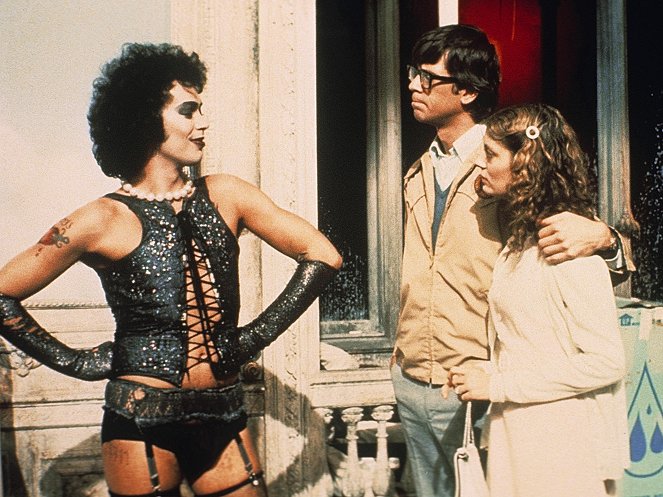
The end of the millennium and the decline of musicals
In the 1980s, the creation of many film musicals was favourably influenced by the popularity of Broadway and London's West End stage musicals, but otherwise the genre stagnated and gradually died out until the end of the millennium. John Landis made Blues Brothers (1980), combining a musical about two ex-criminals with action-packed car chases; Blake Edwards wrote Victor Victoria (1982) for his then-wife and former musical star Julie Andrews; and Alan Parker innovatively built the plot of Pink Floyd's The Wall (1982) around the songs of the rock band Pink Floyd. Frank Oz's Little Shop of Horrors (1986), an imaginative black-humour musical about a carnivorous plant based on the namesake stage musical from 1960 inspired by a horror-comedy, was notable for its spectacular alternative ending and remains a cult hit to this day. The British musical Monty Python's The Meaning of Life is similarly perceived as a sequence of absurd sketches and inventive songs by the famous comedy group Monty Python. Other musicals worth mentioning are Footloose (1984) and A Chorus Line (1985).
The end of the 1980s and the entire 1990s were not a particularly fruitful period in terms of musicals, but there were a few exceptions. At the turn of those decades, several animated musicals from Disney (see below) and other studios, such as The Swan Princess (1994), Anastasia (1997) and The Prince of Egypt (1998), met with great acclaim. The success of animated musicals did not end there, and they include the stop-motion and widely acclaimed The Nightmare Before Christmas (1993), directed by Henry Selick and co-written by Tim Burton, and the controversial satirical South Park: Bigger, Longer & Uncut (1999), which followed the animated series by the creators of the wacky live-action musical Cannibal! The Musical (1993). Among the live-action musicals of the 1990s, the adaptation Andrew Lloyd Webber's Evita (1996), starring Madonna as the wife of Argentine President Juan Perón, directed by Alan Parker, and Woody Allen's Everybody Says I Love You (1996) clearly towered above the rest of the competition.
Little Shop of Horrors (1986)
Photo © Warner Bros. UK
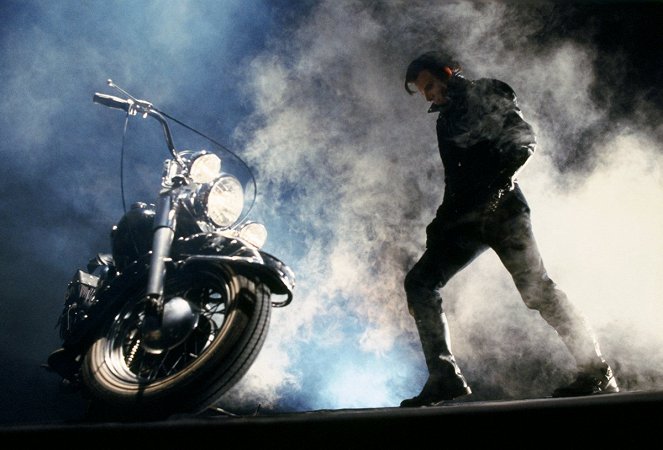
The golden era of Disney Musicals
The late 1980s and early 90s saw the resounding success of several animated musicals by Disney, which at the time was enjoying a renaissance and a return to the top after a long string of failures and disappointments. Disney had been making animated musicals since the 1940s, when Dumbo (1941) and Melody Time (1948), among others, premiered. Since then, they produced not only many other animated musicals (e.g. Lady and the Tramp in 1955 and The Jungle Book in 1967), but also live-action musicals (In Search of the Castaways, 1962), or even musicals combining live-action and animation (Song of the South from 1946, Pete's Dragon from 1977, and the aforementioned Mary Poppins). In 1989, The Little Mermaid became a big hit and was followed by Beauty and the Beast (1991, the first animated film ever nominated for an Academy Award in the Best Picture category), Aladdin (1992) and The Lion King (1994), all of which broke successive box office records.
The key in this respect was Disney's cooperation with composer Alan Menken, who was also behind Little Shop of Horrors, and was first put in charge of The Little Mermaid and then the other films mentioned above. Since then, Menken has collaborated with various writers on many other Disney musical animated films, including Pocahontas (1995), The Hunchback of Notre Dame (1996), Hercules (1997) and Tangled (2010). Other animated films that were musicals include Mulan (1998), The Princess and the Frog (2009), Frozen (2013) and Moana (2016). The more recent live-action musicals produced by Disney worth mention include the High School Musical series (2006-2008), The Muppets (2011), Into the Woods (2014), the live-action remakes of Beauty and the Beast (2017) and Aladdin (2019), as well as Enchanted (2007) and Mary Poppins Returns (2018), which combine live-action with animation.
The Lion King (1994)
Photo © 2002 WALT DISNEY Pictures
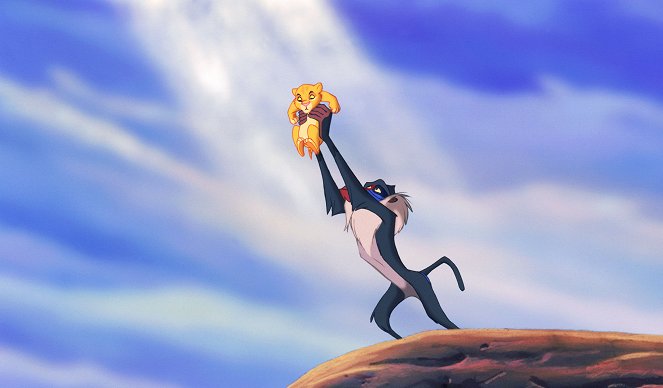
Bollywood musicals across the ages
Indian cinema has evolved on its own axis since its beginnings. The Mumbai-based film industry known as Bollywood has long been more productive than any other studio system in the world in terms of the number of films made annually, and the majority genre has always been the musical. The earliest Indian musicals were based on the traditions of Indian theatre and the format of early American sound films. The first feature Indian sound film was The Light of the World (1931), inspired by the fairy tale collection “One Thousand and One Nights”. Some of the most famous musicals were made in the period from the 1940s to the 60s, known as the golden age of Indian cinema. Films such as Woman (1940) and its Oscar-nominated remake Mother India (1957), The Tramp (1951), Mr. Fraud (1955) and Eternal Thirst (1957) are among the most acclaimed works of the time.
Until the 1970s, Indian musical cinema was dominated by mannerist romantic films and stories about working class life, but after that, Bollywood developed the so-called masala film, which combined various genres and defined the direction that filmmaking has taken in India since then. Amar Akbar Anthony (1977) was a breakthrough in this vein, telling the story of three brothers separated as children and only reunited many years later as followers of three different religions. Zanjeer (1973) combined a musical with a crime plot set in the Indian underworld, while Flames of the Sun (1975) was inspired by American films set in the Wild West. Laawaris (1981) was another musical that worked with a plethora of genres, telling the story of a man trying to find out the identity of his parents who disowned him as a child.
The second half of the 1980s marked a decline of film and musical production in India due to audience fatigue with violent action films, and it was only remedied with Qayamat Se Qayamat Tak (1988), which brought back the romantic theme of love between two young people. The subsequent phase of development of Indian cinema in the 1990s, referred to as "New Bollywood", thus revisited the romance motif with films such as Moonlight (1989), Raja Hindustani (1996), and The Heart Is Crazy (1997). After the turn of the millennium, the musical Lagaan: Once Upon a Time in India (2001), an Oscar-nominated story combining national history with romance and sports themes, became an international success. Other Indian musicals that enjoyed success in the following years include A Match Made by God (2008) and This Youth Is Crazy (2013).
The Heart Is Crazy (1997)
Photo © Yash Raj Films

The reboot of American musicals after 2000
Moulin Rouge! (2001) by Baz Luhrmann succeeded in reviving public interest in musicals. Inspired by several operas and featuring excerpts from famous songs of decades past interpreted by Nicole Kidman and Ewan McGregor, this postmodern, stylized romantic drama was nominated for eight Academy Awards, received rave reviews, and became one of the most celebrated musicals in history thanks to its remarkable audiovisual diversity and exquisite production. Its success was followed by Rob Marshall's Chicago (2002), which won six Oscars out of thirteen nominations and starred Renée Zellweger, Catherine Zeta-Jones and Richard Gere in a story about two murderous cabaret singers who are turned into media stars by their lawyer.
Based on the famous musical by Andrew Lloyd Webber, director Joel Schumacher made The Phantom of the Opera in 2004, telling the classic story of a disfigured musical genius who inhabits the catacombs of a theatre. 2007 saw the premiere of the hilarious comedy musical Hairspray, directed by Adam Shankman, and the dark and gloomy Sweeney Todd: The Demon Barber of Fleet Street, directed by Tim Burton. Unfortunately, Rob Marshall failed to follow up the success of Chicago with Nine (2009), despite four Oscar nominations, while Tom Hooper's highly praised and Oscar-nominated adaptation of the French musical Les Misérables (2012) took home three golden statuettes.
Six of the thirteen Oscar nominations went to the hugely successful romantic musical La La Land (2016), about a lovelorn couple played by Emma Stone and Ryan Gosling confronting ambitious dreams and harsh realities, and which its director, Damien Chazelle, conceived as an homage to the musicals of the classic Hollywood era. The Greatest Showman (2017), a musical starring Hugh Jackman as a character inspired by a real-life circus principal, was also a success with audiences. In contrast, Cats (2019), based on the stage musical by Andrew Lloyd Webber, was a huge flop and received only ridicule and sneers.
Moulin Rouge! (2001)
Photo © 2001 20th Century Fox
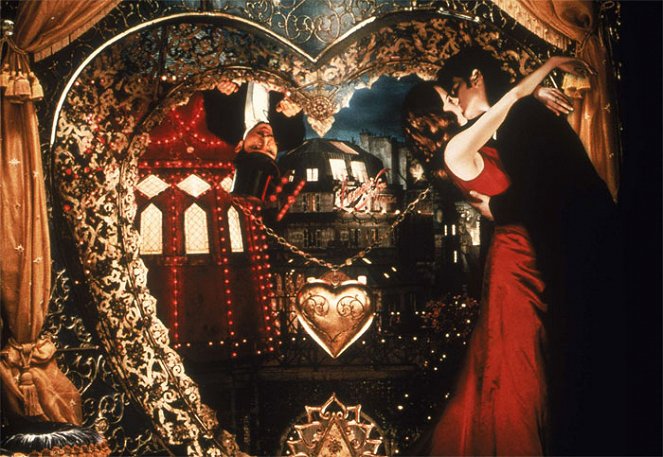
The boom of the biopic musical
In addition to a number of other musicals, there were several films made after 2000 based on songs by famous bands. Across the Universe (2007), for instance, revolved around hits by The Beatles, Mamma Mia! (2008) consisted of songs by ABBA, and Sunshine on Leith (2013) made extensive use of songs by the Scottish duo The Proclaimers. But there have been many more biopic musicals dealing with the fate of famous singers. 8 Mile (2002), for instance, was based on the life story of rapper Eminem, Ray (2004) focused on the career of Ray Charles and Walk the Line (2005) told the story of Johnny Cash.
The musical Dreamgirls (2006) was inspired by the story of The Supremes, while the career of a famous French chansonnier was recapitulated in La Vie En Rose (2007). Notorious (2009) was about the rise and tragic shooting of rapper Christopher Wallace aka Biggie Smalls, the drama Jersey Boys (2014) was about the members of The Four Seasons, and Get on Up (2014) was about the singer who became famous for the song "I Feel Good". The musical drama Straight Outta Compton (2015) explored the story of rap group N.W.A, the hugely successful Bohemian Rhapsody (2018) focused on Freddie Mercury's time in Queen, and the biopic Rocketman (2019) told the story of Elton John.
Filmmaniak
Best musicals
The Lion King (1994) |
Snow White and the Seven Dwarfs (1937) |
Pink Floyd: The Wall (1982) |
Singin' in the Rain (1952) |
My Fair Lady (1964) |
Hair (1979) |
The Sound of Music (1965) |
Corpse Bride (2005) |
The Nightmare Before Christmas (1993) |
Beauty and the Beast (1991) |
| All the best musicals |